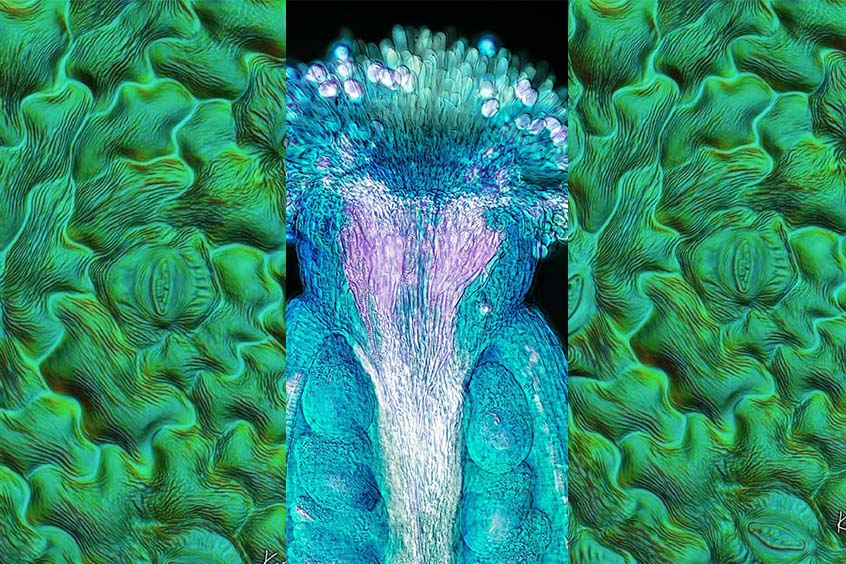Spring has arrived, and with it comes new life. The top microscope images for March have us thinking about the color green and how it represents growth, progress, and new beginnings.
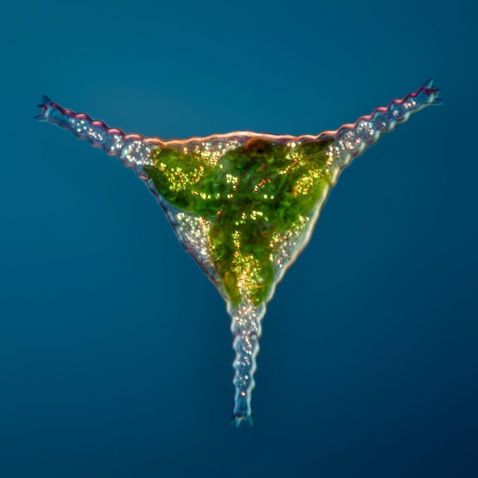
The star of the month is Staurastrum. In short, Staurastrum are single-celled green algae that can only be found in freshwater. The cell walls may be smooth or ornamented and contain compounds that make them resistant to decay. This specimen was found in Lake Mälaren in Stockholm, Sweden.
Image courtesy of Håkan Kvarnström. Captured in differential interference contrast (DIC) using a 60X objective.
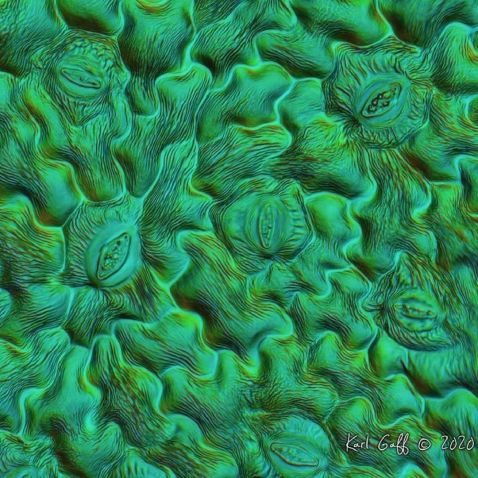
While this may not be a four-leaf clover, we got into the St. Patrick’s Day spirit with this stunning green image showing us the cellular surface of a bindweed leaf. While many of the bindweed species are invasive weeds, some are cultivated for their attractive, trumpet-shaped flowers, also known as morning glories.
Image courtesy of Karl Gaff. Captured using transmitted light and epi-illumination fluorescence on an Evident BX51 microscope.
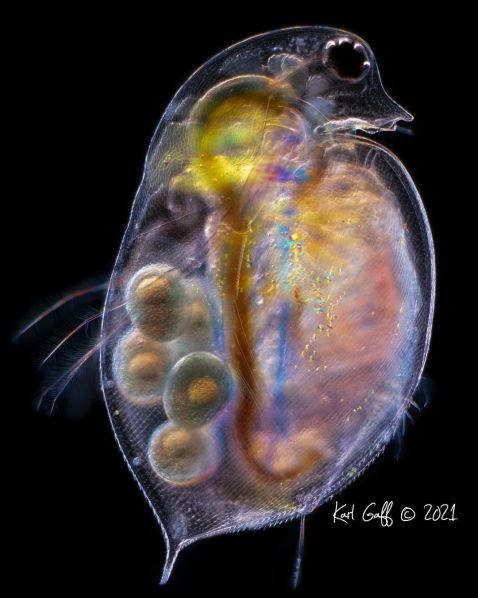
Karl Gaff takes two of the top five spots this month with his incredibly detailed images. We love this amazing capture of a Daphnia magna (a small planktonic crustacean) and her eggs. This species of Daphnia can produce a clutch of more than 100 eggs every three to four days until her death.
Image courtesy of Karl Gaff. Captured using an Evident BX51 microscope.

Here you're looking at an Arabidopsis thaliana pistil, the ovule producing part of this flower. Like the bindweed above, the thaliana is considered a weed. It is often seen growing along the side of the road in Europe, Asia, and Africa. This image is a composite of several focus-stacked DIC photographs and widefield autofluorescence microphotography (UV excitation). Tissues were cleared with chloral hydrate solution.
Image courtesy of Jan Martinek.
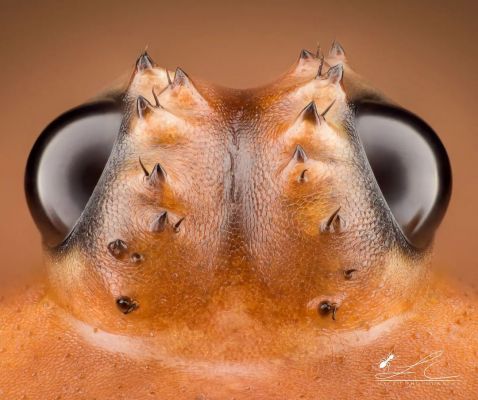
Many people assume daddy longlegs are spiders, but they are actually arachnids like mites, ticks, and scorpions. They only have two eyes, as shown here peering at us, and can't make silk for spinning webs like spiders can.
Image courtesy of Leonardo Capradossi. Image captured using an Evident 20X LMPlanFL objective.
Our bonus video features a tardigrade since everyone loves these microscopic animals. Tardigrades are also called water bears since their walk has been compared to a bear's gait and they prefer wet or humid environments.
This poor water bear was caught off guard and had an “accident” on the slide when being filmed. Tardigrade accidents can be as large as 1/3 of their body size! The green coloring is caused by their diet of mainly algae and lichen.
Video courtesy of Benedikt Pleyer. Captured on an Olympus CX43 microscope at 200x magnification using brightfield.
To see more images like these, be sure to follow us on Instagram at @olympuslifescience.
Interested in sharing your own images? Visit our image submission site.
Related Content
Microscopic Valentines—Our Most-Loved Microscope Images for February 2022
Diatoms to Dinosaurs—Our Most Popular Microscope Images for January 2022
Surf and Turf—Our Most Popular Microscope Images for December 2021
